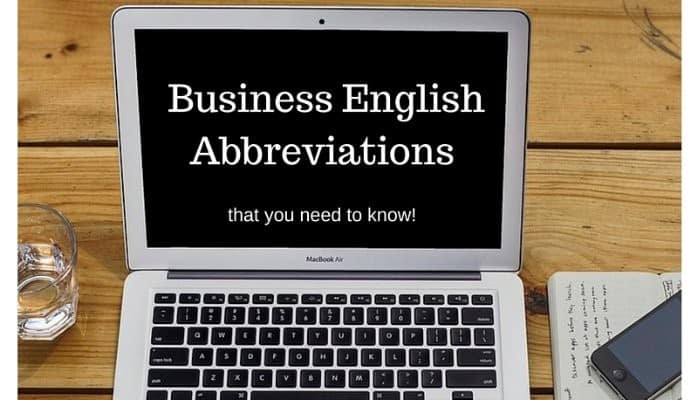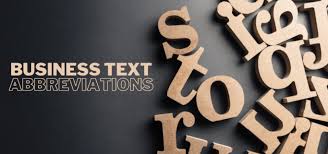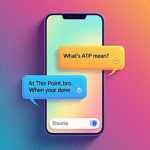In the fast-paced world of digital communication, understanding text abbreviations is crucial for seamless interactions. Whether you’re connecting with customers, colleagues, or other businesses, mastering the art of text shorthand enhances your ability to communicate effectively. This comprehensive guide will delve into common text abbreviations and business-specific acronyms, providing you with the key to navigating the dynamic landscape of online conversations.
Business Text Abbreviations: Navigating the Professional Realm
When engaging with co-workers or other businesses, leveraging common abbreviations can streamline communication. Here’s a quick reference list for some of the most popular business acronyms:
| Abbreviation | Meaning | Abbreviation | Meaning |
|---|---|---|---|
| AKA | Also known as | ASAP | As soon as possible |
| BOGO | Buy one Get one | BRB | Be right back |
| BTW | By the way | DIY | Do it yourself |
| DM | Direct message | DND | Do not disturb |
| EOD | End of day | EOSS | End of season sale |
| FYI | For your information | ICYMI | In case you missed it |
| IMO | In my opinion | JIC | Just in case |
| LMK | Let me know | N/A | Not available |
| OOO | Out of office | T&C | Terms and conditions |
| TBA | To be announced | TBD | To be determined |
| TIA | Thanks in advance | TY | Thank you |
| TTYL | Talk to you later | WFH | Work from home |
Common Text Abbreviations: Bridging the Casual Gap

While some abbreviations are business-specific, others find their place in casual conversations. Here’s a list of common text abbreviations that might pop up in your interactions:
| Abbreviation | Meaning | Example |
|---|---|---|
| AFK | Away from keyboard | “Heading AFK, be back in a few.” |
| AKA | Also known as | “Our new product, AKA the ‘Tech Wonder’.” |
| ASAP | As soon as possible | “Need your response ASAP.” |
| FYI | For your information | “Meeting notes attached FYI.” |
| LMGTFY | Let me Google that for you | “LMGTFY: Check it out yourself.” |
| N/A | Not applicable/available | “Question doesn’t apply, marked as N/A.” |
| NRN | No reply necessary | “Issue resolved, NRN.” |
| TIA | Thanks in advance | “Your help is appreciated, TIA.” |
Why Mastering Text Abbreviations Matters
Understanding these text abbreviations isn’t just about staying trendy; it’s a strategic move for businesses. Here’s why you should dive into the world of text shorthand:
Improve Customer Experience
In a world where customers crave instant communication, using text abbreviations fosters a more relaxed and connected tone. It signals to customers that they, too, can embrace this efficient form of communication.
Enhance Readability
Text abbreviations condense messages, making them shorter and easier to digest. With the average smartphone screen limited in space, adopting the right SMS language reduces the space a sentence occupies, ultimately cutting your cost per text.
Mistakes to Avoid When Using Text Abbreviations

While mastering text abbreviations is essential, certain pitfalls must be sidestepped. Here are six common mistakes to avoid:
- Texting Shorthand: Resist the urge to substitute words with numbers or shorthand, as it can hinder readability.
- Overuse of Abbreviations: Balance is key; inundating messages with abbreviations can diminish readability and turn off readers.
- Obscure Abbreviations: Stick to widely known acronyms to ensure effective communication.
- Inappropriate Abbreviations: Choose acronyms carefully; not all are suitable for a business context.
- Using Abbreviations at the Wrong Time: Gauge the situation; avoid casual abbreviations when conveying serious news.
- Using Unfamiliar Abbreviations: Ensure you understand the meaning before using or responding to an abbreviation.
Other Business Texting Abbreviations You Should Know
Here’s a quick reference to common text abbreviations for broader understanding:
- TBC – to be confirmed
- TBA – to be announced
- TBD – to be determined
- POC – point of contact
- VIP – very important person
- FAQ – frequently asked question(s)
- N/A – not applicable (or not available)
- TIA – thanks in advance
- OOO – out of office
- IAM – in a meeting
- T&C – terms and conditions
- R&D – research and development
- NP – no problem
- NW – no worries
- EOD – end of day
- EOM – end of message
- COB – close of business
- OTJ – on-the-job
- ETA – estimated time of arrival
- EMBM – early morning business meeting
- AGM – annual general meeting
- AOB – any other business
- RFP – request for proposal
- RFQ – request for quotation
- RFI – request for information
- PFA – please find attached
- FYA – for your action
- FYR – for your reference
- PS – post scriptum
- AR – action required
- PRB – please reply by
- NRN – no reply necessary or no reply needed
- Y/N – yes or no
- NDA – non-disclosure agreement
- LOI – letter of intent
- MOU – memorandum of understanding
- CTA – call to action
- SOP – standard operating procedure
- ROI – return on investment
- VFM – value for money
- CTR – click-through rate
- KPI – key performance indicator
- PMO – project management office
- SME – subject matter expert
- B2B – business-to-business
- B2C – business-to-consumer
- BOGOF – buy one get one free
- FF – follow Friday
- OTP – one-time password
- HTH – hope this helps
- WFH – work from home
- F2F – face to face
- BYOD – bring your own device
- PTO – paid time off
- NWR – not work-related
Conclusion: Mastering the Art of Text Abbreviations
In the ever-evolving landscape of digital communication, navigating text abbreviations is not just a skill; it’s a necessity. By embracing these shortcuts, businesses can foster better connections, enhance customer experience, and streamline communication. Remember, it’s not just about knowing the abbreviations; it’s about using them strategically and contextually.








6 thoughts on “Text abbreviations for business”